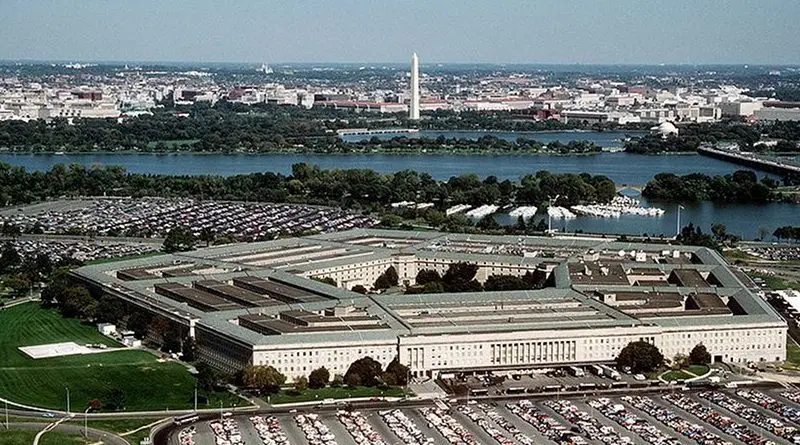SecAF takes stock of progress, future challenges
By DoD News
By Master Sgt. Amaani Lyle
During remarks to the Air Force Association’s 27th Annual Air Warfare Symposium and Technology Exposition here Feb. 18, the Air Force’s senior ranking official reviewed the service’ s priorities and underscored Air Force commitment to making the most of available resources in a challenging fiscal environment.
Air Force Secretary Michael Donley spoke at the AFA event a day after he and Air Force Chief of Staff Gen. Norton Schwartz testified before the House Armed Services Committee in Washington, D.C., on the Air Force’s current posture and fiscal 2012 budget.
Addressing an audience of approximately 300 AFA members, defense industry officials, and U.S. military representatives, he said that he and General Schwartz noted a “distinctly different budget climate this year” in light of new fiscal restraints.
“Congress has begun a serious and what is likely to be a protracted debate over our national debt, persistent annual budget deficits and priorities in the federal budget,” Secretary Donley said. “If there were any doubt that defense would be part of that debate, I think that doubt was erased this week.”
In this context, he characterized Defense Secretary Robert Gates’ mandate for the services to find more than $100 billion in internal savings and efficiencies as “more than prescient”, enabling Department of Defense officials to shift these savings from lower priority “tail” to warfighting “tooth” over the Future Years Defense Plan.
Toward this effort, Air Force officials have identified $33 billion in savings and efficiencies they can redirect into high priority programs. Despite reduced personnel, aging equipment and a leaner budget, they are continuing their imperative to get the most out of all the resources the service provides, said Secretary Donley.
“This is not sloganeering,” he said. “We are absolutely committed to implement the efficiencies now planned. We recognize that some may yield less than we projected, some may yield more. But we will stay after it and continue to look for additional opportunities for savings and efficiencies going forward.”
Air Force Priorities
The symposium also provided an opportunity to update attendees on the status of Air Force efforts to achieve its top priorities and the road ahead.
While the service has many short- and long-term tasks and objectives to deliver, having a set of priorities helps keep Air Force men and women focused on the big picture, Secretary Donley said.
The Air Force’s priorities include strengthening the Air Force nuclear enterprise; partnering with the joint and coalition team to win today’s fight; developing and caring for Airmen and their families; modernizing air and space inventories, organizations, and training; and recapturing acquisition excellence.
Addressing these priorities is an ongoing, multi-year effort, the secretary said.
“We continue to strengthen the nuclear enterprise; we’ll provide safe, secure, and effective combat ready forces for nuclear deterrence and global strike operations,” he said, adding that management and oversight of nuclear weapon-related material involves sustaining and upgrading systems and managing human capital.
He also said partnering with the joint and coalition team to win today’s fight has been fundamental to successes in both Iraq and Afghanistan over the past year.
“With nearly 34,000 Airmen deployed to contingencies across the globe, and 28,000 supporting the fight from 63 locations in U.S. Central Command, we’ve supported the joint and coalition team with more than a half million hours flown in theater in the last year, averaging more than 400 sorties a day,” Secretary Donley said. “We remain as committed as ever to providing the global vigilance, reach and power that enabled a successful transition in Iraq from combat operations to a ‘train, equip and support’ role and the surge in Afghanistan.”
On the vigilance side of the equation, the secretary said that as demand for intelligence, surveillance and reconnaissance continues to grow, Air Force officials are aggressively evolving the ISR capability to support combat operations. He said the service will also take a closer look this year at how best to size and balance the full portfolio of ISR assets in the future.
“In active response to today’s urgent operational needs, in pushing forward additional breakthroughs in new technology using rapid acquisition processes, and fueled by supplemental appropriations, we have developed a wide range of new ISR sensors and platforms,” the secretary said. “As resources diminish, we need to rationalize this work and develop a balanced portfolio for the future.”
The secretary also discussed support for the Air Force’s long-range strike “family of systems,” another acquisition priority.
“Maintaining the ability to hold virtually any target on the planet at risk is fundamental to our national security and military strategies as a conventional and nuclear deterrent against aggression around the world,” he said.
One of the most important impacts of Air Force efficiency savings, he said, is that it has given service the opportunity to begin a new long-range nuclear-capable penetrating bomber program.
After touching on efforts within each of the service’s priorities, the secretary concluded with his intention to keep the Air Force’s most critical asset at the forefront.
“Our greatest guarantor of success is our Airmen, and that’s why developing and caring for Airmen and their families is a priority,” Secretary Donley said.
“Taking care of Airmen and their families is a priority because it is on their shoulders that we prevail in today’s fights, that we will prevent and deter others and prepare for the challenges of tomorrow,” he said. “It will be their insight, their innovation that will drive much of the way we organize train, equip and operate to meet future challenges.”

